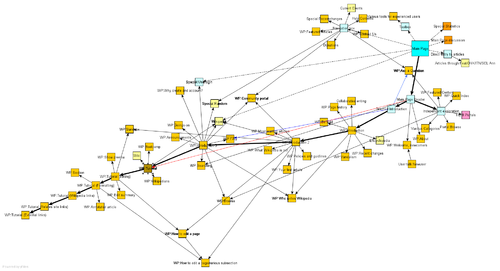Types


Sitemaps may be addressed to users or to software.
Many sites have user-visible sitemaps which present a systematic view, typically hierarchical, of the site. These are intended to help visitors find specific pages, and can also be used by crawlers. They also act as a navigation aid [1] by providing an overview of a site's content at a single glance. Alphabetically organized sitemaps, sometimes called site indexes, are a different approach.
For use by search engines and other crawlers, there is a structured format, the XML Sitemap, which lists the pages in a site, their relative importance, and how often they are updated. [2] This is pointed to from the robots.txt file and is typically called sitemap.xml. The structured format is particularly important for websites which include pages that are not accessible through links from other pages, but only through the site's search tools or by dynamic construction of URLs in JavaScript.